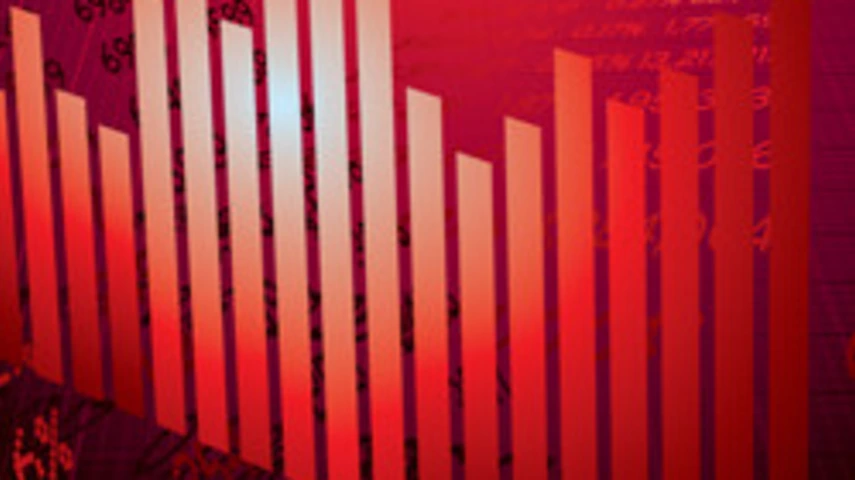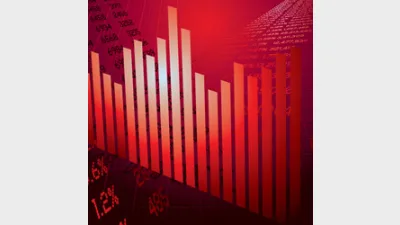Markets shaken to the core?



Following the recent devastation in Japan, Ron Bewley asks: What does it take to shake our market?
I started writing this article on the morning of 15 March – just hours before the panic following the radiation warning for Japan’s nuclear reactors.
At that point, we had seen the tragedies and misery inflicted on the people of Japan and beyond for four days, but it was the potential nuclear core meltdown that took the S&P/ASX 200 down by over 100 points during lunch.
My point was going to be quite straightforward – the facts on the behaviour of the market don’t match what I hear and read in commentaries.
Let’s start with something called cross-sectional volatility.
It sounds like a mouthful but it is just a simple measure of how stock returns move together or otherwise on a given day.
If returns move largely together, this type of volatility will be low. If returns start going in all directions, this volatility is high.
I took data from each day starting in April 1985 for the top 200 stocks of that day. Thus, the universe of stocks evolves over time with the composition of the S&P/ASX 200.
This statistic is then calculated as the weighted standard deviation of stock returns on a given day – and the weights are the market capitalisations of each stock. Since these numbers bounce around a bit, I have then taken the average over the quarter.
In previous research, I have found this type of volatility to be very useful as a leading indicator of the traditional (time series) stock market volatility. I show these data in figure 1.
There are sharp peaks around the 1987 stock market crash and the global financial crisis (GFC). Cross-sectional volatility was also quite high for a number of years around the Asian crisis (1997-98), the ‘tech wreck’ (2000) and September 11 (2001).
There was a smaller blip during our last recession 20 years ago in 1990-91.
Perhaps the real surprise is how low cross-sectional volatility was at the close of March 14th 2011.
In fact, there has only been one quarter when this type of volatility was lower – and even that was only slightly lower.
If I compare figure 1 with the S&P/ASX 200 (using a log scale) in figure 2, I see a reasonable correspondence between low cross-sectional volatility and strong bull runs.
So didn’t our market get started after the GFC? Well volatility hasn’t been that low for long. Memories have to heal but behaviour already has.
It is hard for a fund manager to beat the market when stock returns tend to move together. As the use of exchange-traded funds and index funds increase, cross-sectional volatility is likely to trend down.
An orderly market is what we want.
I show the traditional measure of market volatility in figure 3 for each day from January 2009 to the close of March 14, 2011.
The solid black line is the median level of volatility during the GFC and then the post-GFC period. The top dotted line is a simple extension of the GFC level, while the lower dotted line is the median level of volatility pre-GFC.
Volatility was well and truly back down to pre-GFC days until the earthquake and tsunami devastated Japan on Friday 11 March, 2011.
But even in these first two days, volatility was only a little higher – hardly abnormal. When we consider that our senses had been battered by floods, cyclones, the Christchurch earthquake, and countless uprisings in North Africa and the Middle East, where was the volatility?
People talk about volatility, but you just can’t find it when you try to measure it.
My fear index is a measure of excess volatility in the stock market, and it seems to lead the options prices measures that are tied to the Chicago Board Options Exchange Market Volatility Index (VIX).
I show this measure in figure 4 together with two dotted lines. In pre-GFC days the index was contained in this range 66 per cent of the time – the ‘normal’ range.
Not only had fear fallen from its GFC highs but, until Friday 11 March, it was arguably lower than normal – certainly well within the range most of the time.
What now remains to be seen is how much fear – and the other types of volatility – will be generated by the radiation levels in Japan.
That is not a topic that an econometrician or financial analyst can answer. But what I can say is that, despite what has gone on in the world during the first quarter of 2011, the market is behaving more calmly than it ever has.
There is a good chance our market will survive intact.
There would have been almost no chance of that if these natural disasters and geopolitical events had taken place two years ago.
As I finish writing, the market has closed on 15 March less than 100 points down – on a day when there was a near meltdown.
Dr Ron Bewley is an investment consultant with Infocus Money Management.
Recommended for you
In this episode of Relative Return Insider, host Keith Ford and AMP chief economist Shane Oliver discuss the latest shock consumer price index numbers, which rose to 3.8 per cent in October, as well as the shifting US market and calls for super funds to invest in infrastructure projects.
In this episode of Relative Return Insider, host Keith Ford and AMP chief economist Shane Oliver discuss the Reserve Bank of Australia’s cautious stance in response to persistent inflation, subdued growth prospects, and political shifts affecting the nation’s journey towards net zero emissions.
In this episode of Relative Return, host Laura Dew speaks with Rachel White, head of financial adviser services at Vanguard about how advisers can help Australians to feel confident in retirement.
In this episode of Relative Return Insider, host Keith Ford and AMP deputy chief economist Diana Mousina take a look at the Reserve Bank’s unanimous decision to leave rates on hold on Melbourne Cup Day and whether future cuts are still on the cards.








